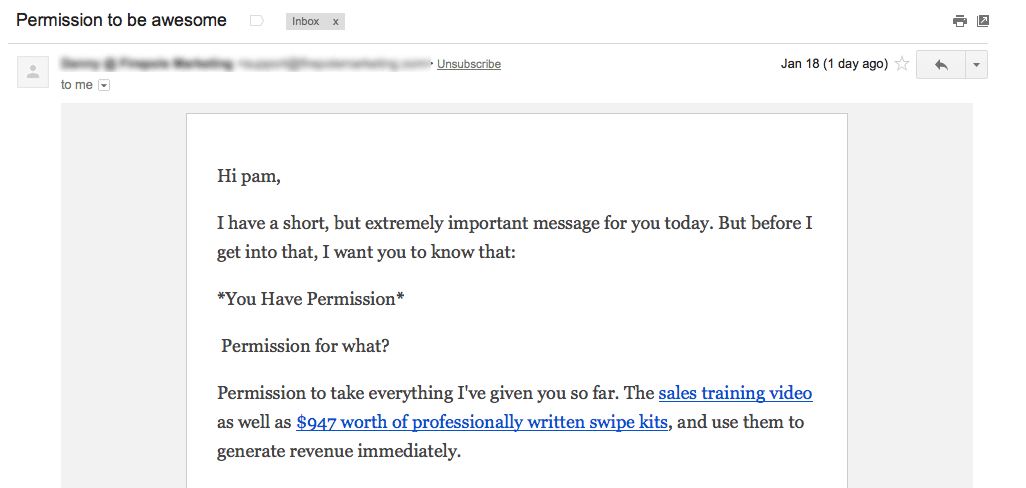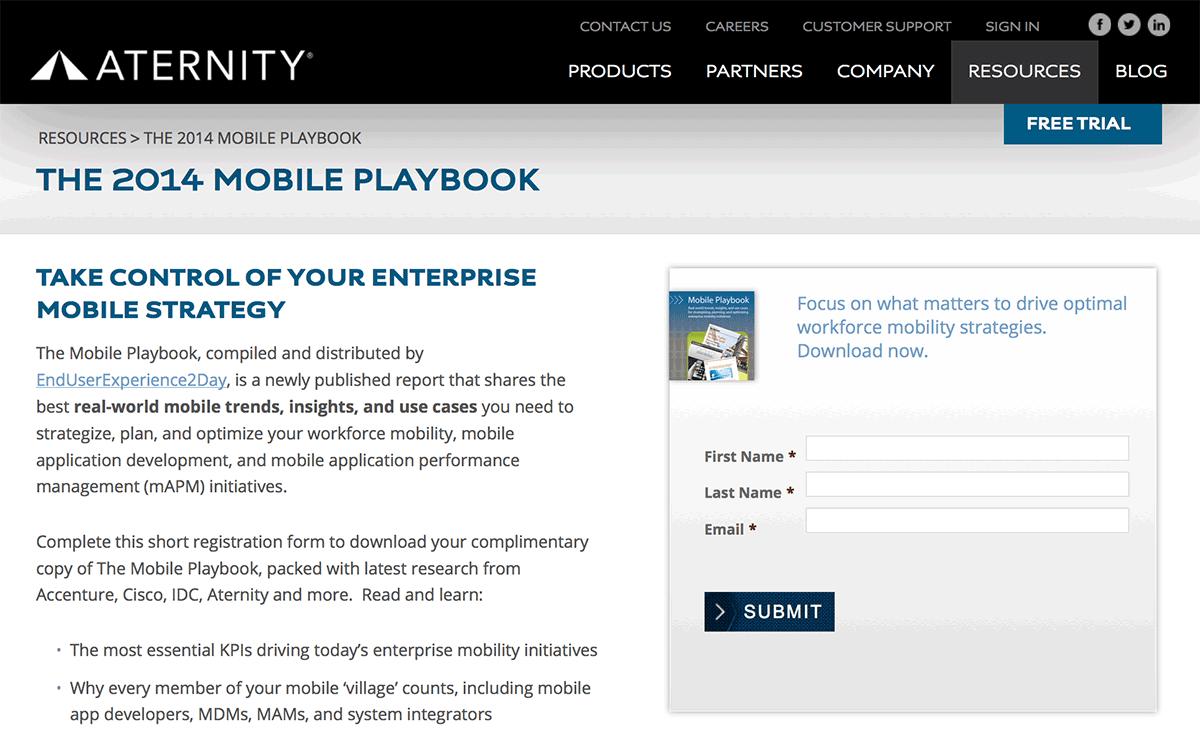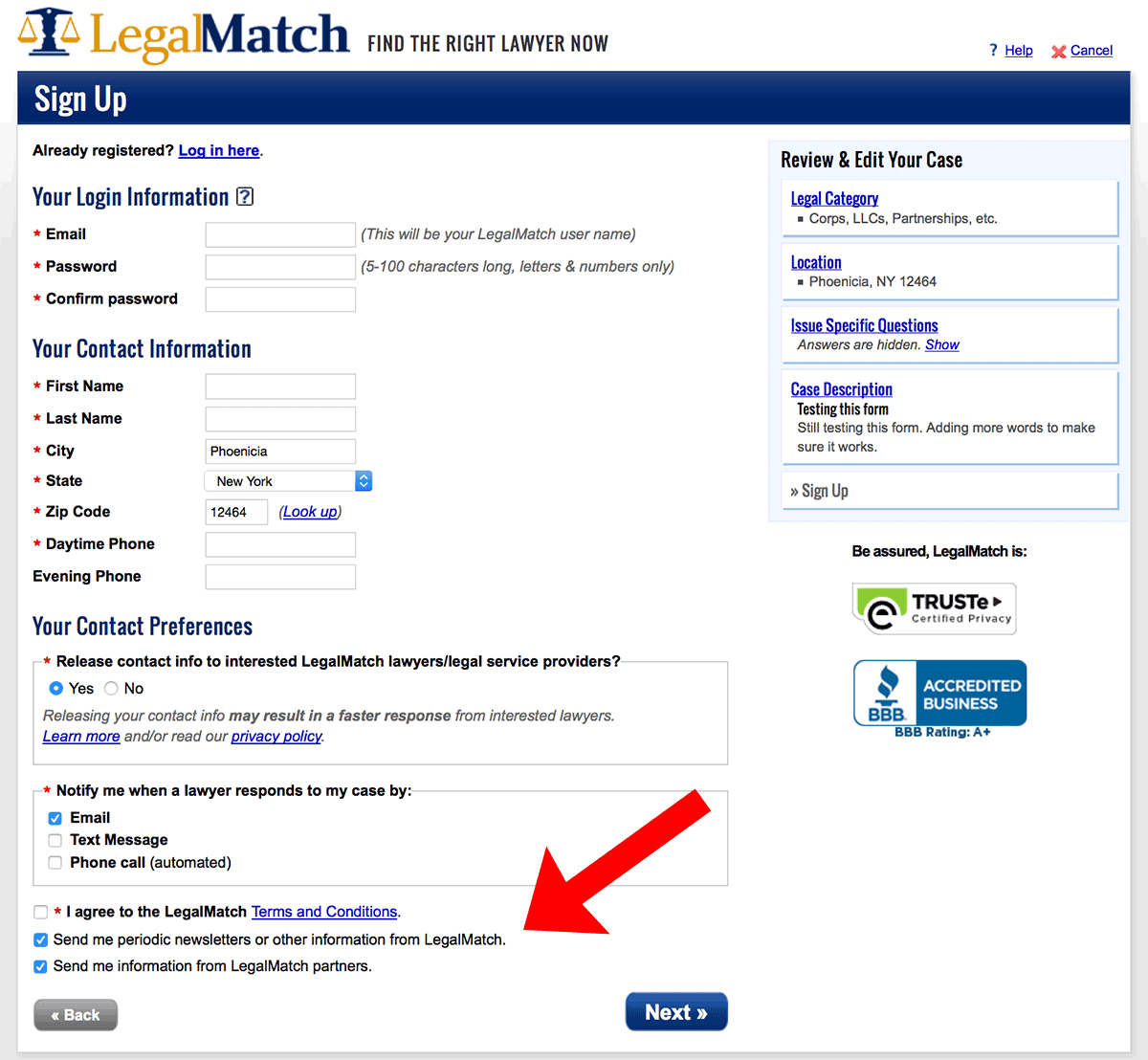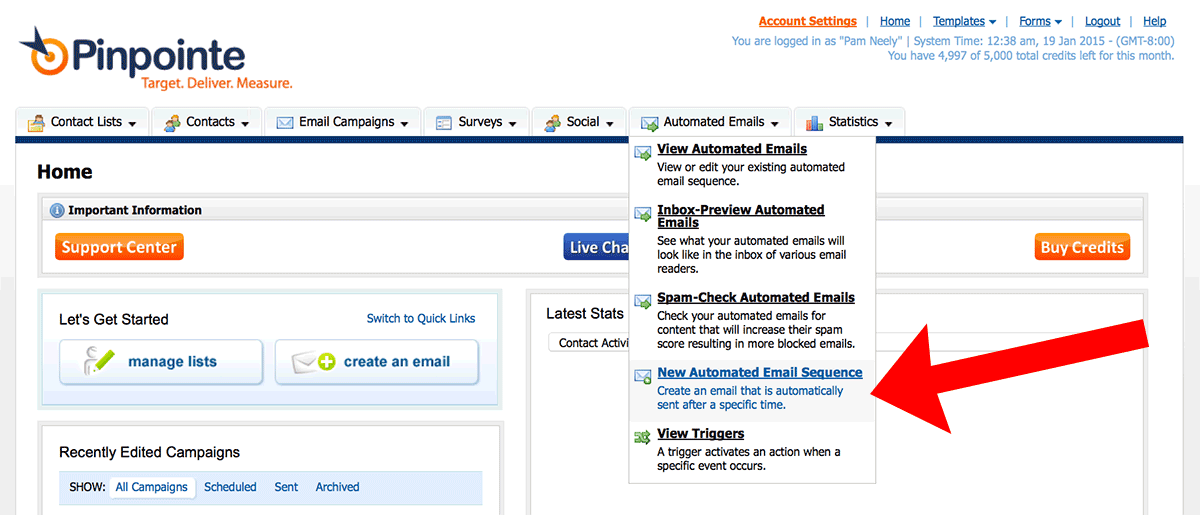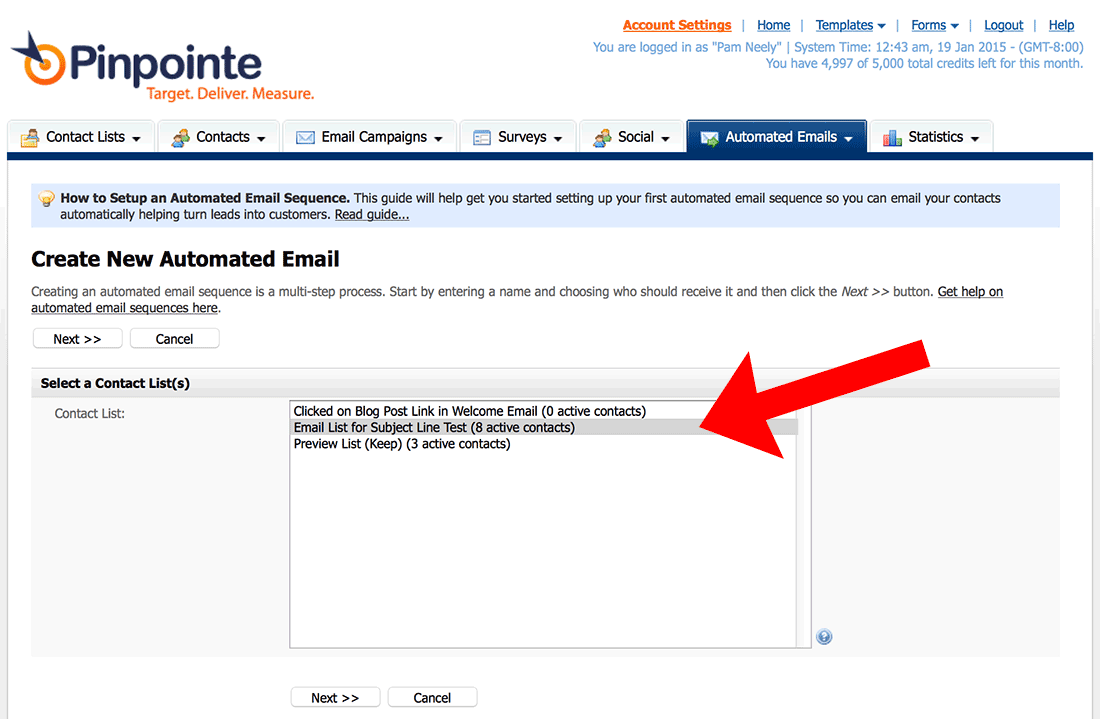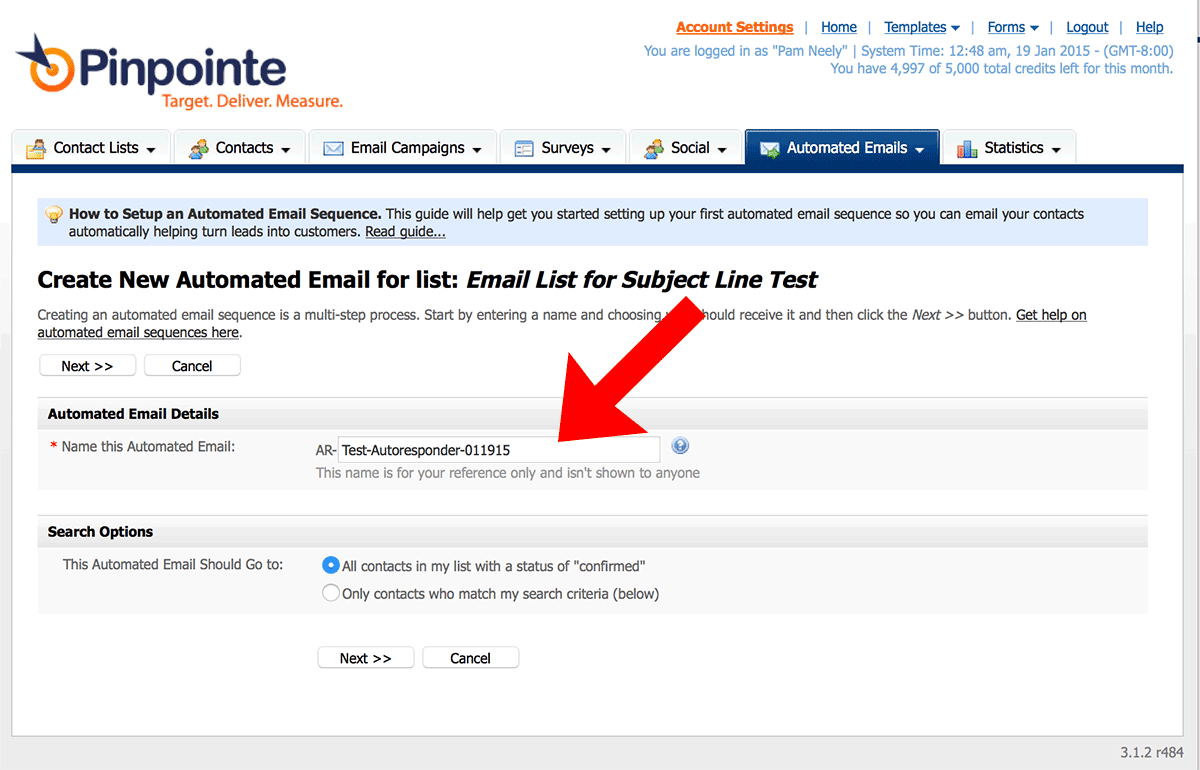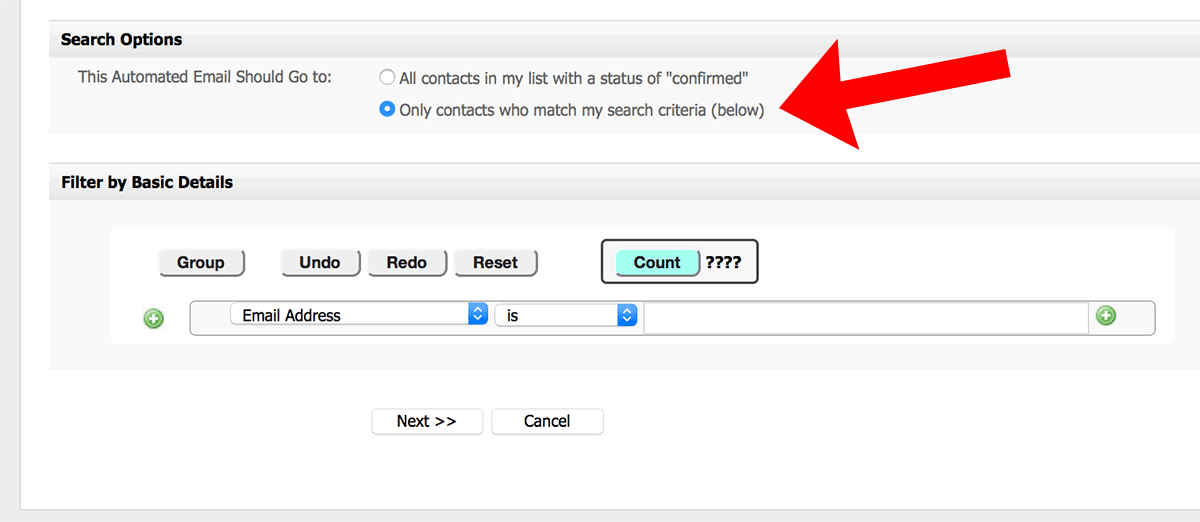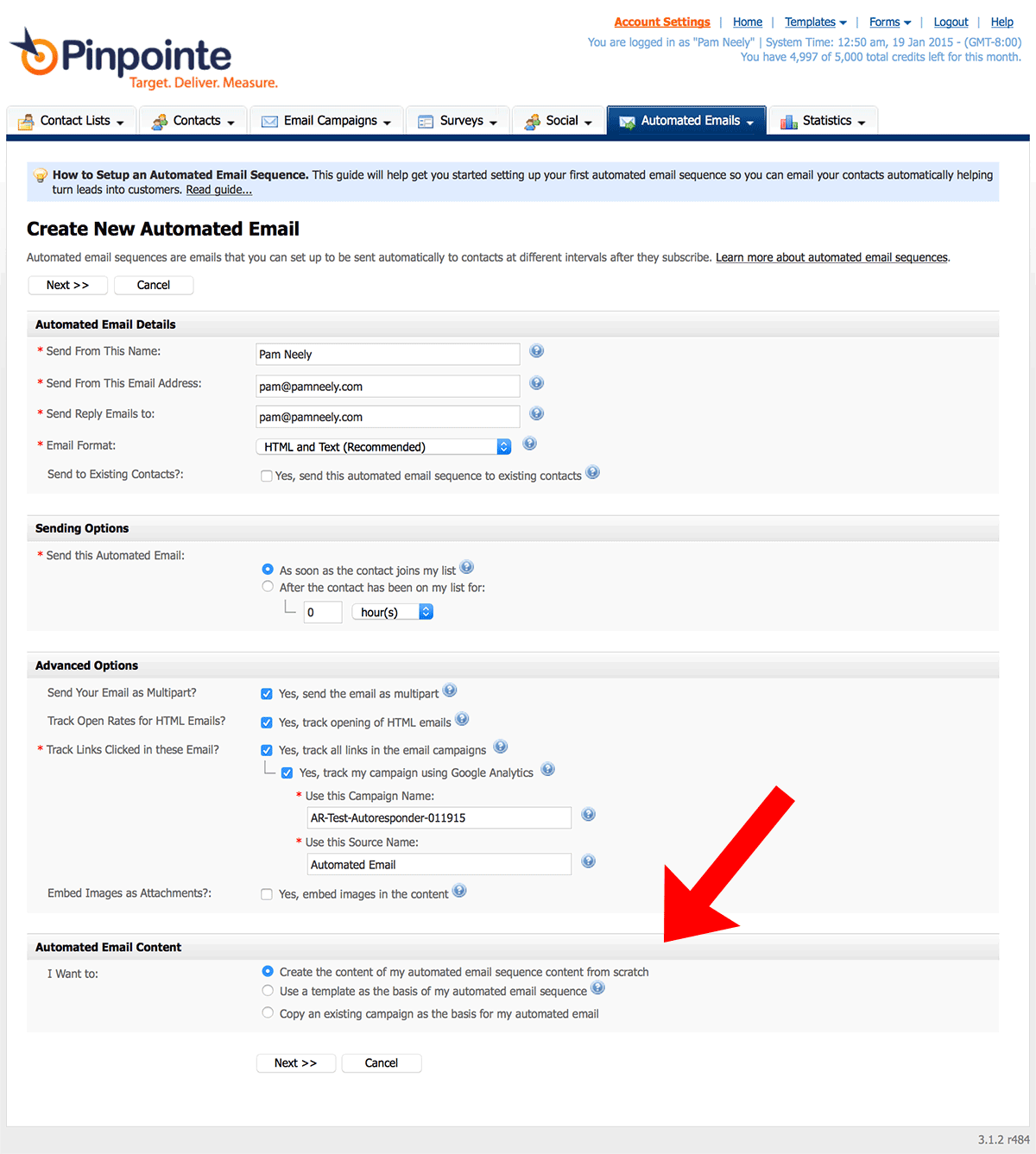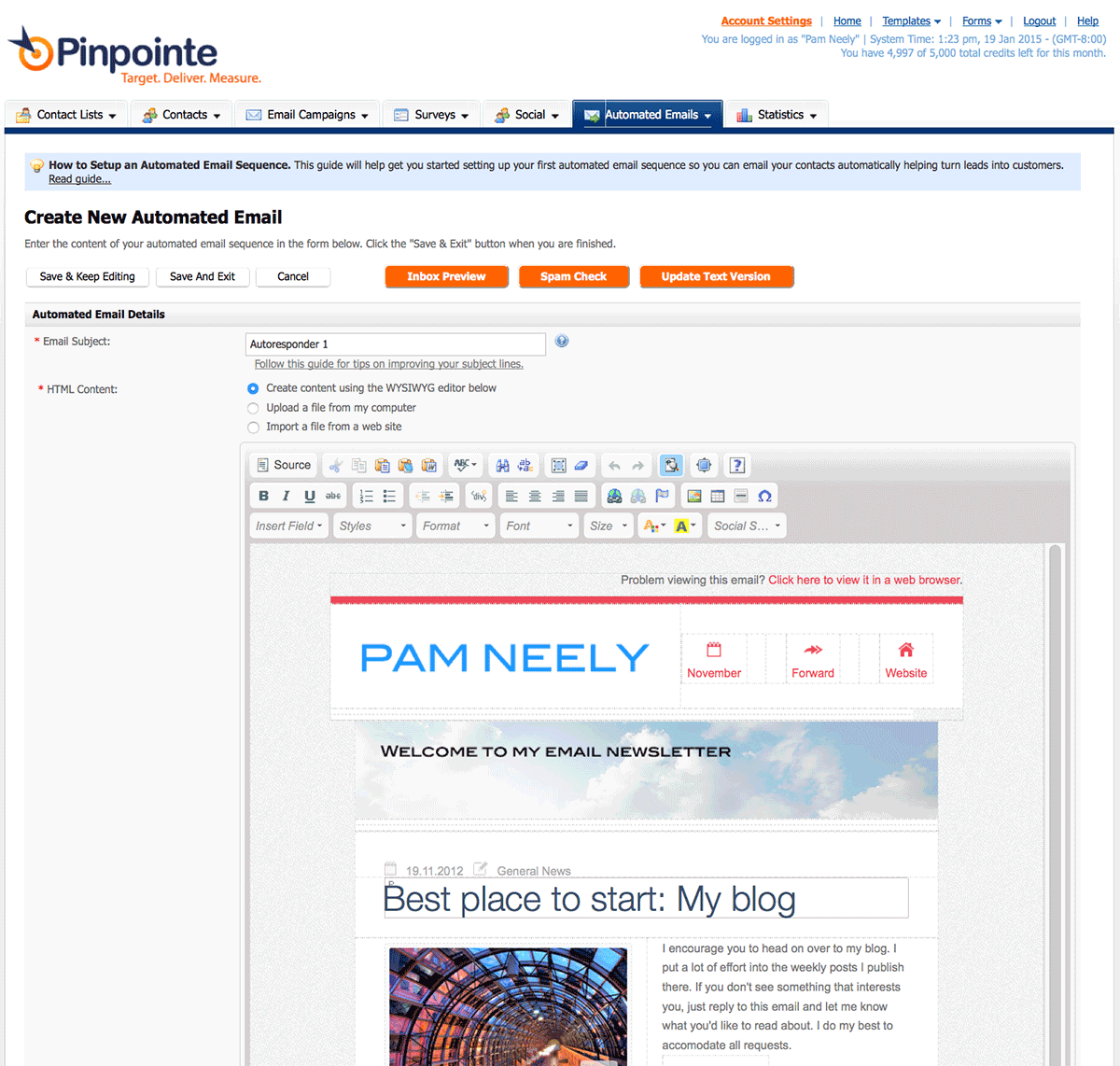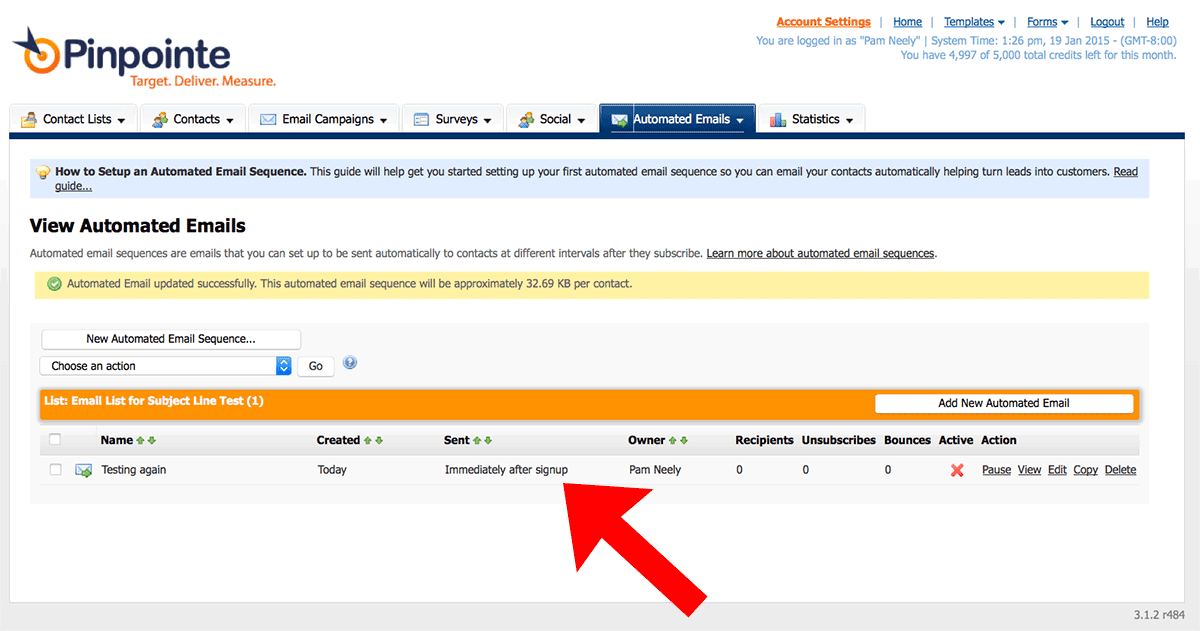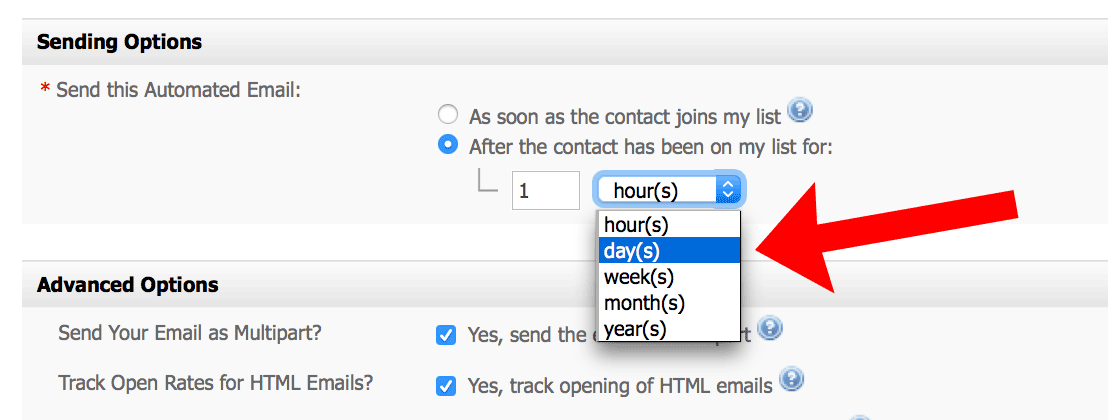Autoresponders are one of the oldest and most effective Internet marketing tactics. They were around even before Google. And despite being so long in the tooth, autoresponders still work as well as they ever did. Actually, they still crush many other marketing tactics, including standard promotional email newsletters.
Just so we’re all on the same page, here’s a definition of an autoresponder:
An autoresponder is an automated email message sent in response to an action a prospect or subscriber has taken.
If that sounds like the triggered emails I wrote about a week ago, you’re right. Triggered emails and autoresponder messages are very similar. They may even be the same thing, depending on how you define them. Both are types of marketing automation. And they’re both, of course, marketing automation done through email.
Autoresponders are a type of triggered email, in that
a) They’re automated
b) They are sent only when someone takes a specific action that triggers them
What makes autoresponders a special kind of triggered email? It's because autoresponders are a series of emails. A triggered email could be just one email, like the example of an order confirmation I used from the triggered email post.
Autoresponder messages are also sent out in a specific order, at specific intervals, according to how the marketer wants them sent. Triggered emails are more directed by the behavior of a subscriber for prospect.
That may not be everyone’s exact definition of an autoresponder, but it appears to be the general consensus. To give you an idea of which types of automated emails marketers are sending, take a look at the survey results below. In December 2012 MarketingSherpa asked 1,095 marketers “What type of automated, event-triggered, lifecycle email messages does your organization deploy? Please check all that apply.” Here’s what they said:
A myth to dispel: Autoresponders don’t have to be all text
Autoresponder messages are usually thought of as being all text, but they don’t have to be. There’s no reason they couldn’t be a very glamorous HTML email. Or each message could deliver an embedded video. Often, autoresponders are a simple HTML emails that are just designed to look like text. Anything goes.
This is an autoresponder message that looks a bit like a text email, but is actually carefully designed HTML:
What we’ll cover in this post
In this post we’ll show you when an autoresponder might be appropriate to use and how to set one up in your Pinpointe account.
The goal here is to show you how to automate a big chunk of your email marketing. We want to give you a way to build stronger, more valuable relationships with your clients or customers. Autoresponders really can free up your time and earn you more sales and clients, and they can do it all while you’re taking care of other parts of your business.
Five Opportunities for Autoresponders
1) After someone downloads a resource from your site.
Whether it’s a case study or an ebook or anything else, when someone gives you their name in exchange for access to a resource, you’ve got an opportunity to email them. But you can do more than just send them one email with a download link. You could add them to an autoresponder series.
Aternity’s 2014 Mobile Playbook is a classic example of a downloadable resource. It’s also an opportunity to add people to an autoresponder.
Now, if you’re going to do this, tell your new subscribers that they’ll be getting more email from you after the initial download. In your follow-up autoresponder messages, make the unsubscribe button easy to find. Consider adding it to the pre-header text.
Why do this? Because adding people to an autoresponder after they’ve downloaded a resource could be seen as stretching the terms of permission. Your new subscriber wanted that resource, not necessarily your autoresponder messages.
Unless your opt-in offer sold the autoresponder as part of the benefit of signing up, some people might not expect a stream of emails from you after they got their resource. This can lead to high unsubscribe rates, or even to spam complaints if they can’t find the unsubscribe link easily.
The solution? It’s three part:
- Make it easy to unsubscribe (always make it easy to unsubscribe…)
- Be upfront about letting people know they’ll be getting more messages from you
- The first autoresponder messages they get from you should be of super-high value, with content that is tailored to be of interest to someone who downloaded that particular resource.
Here’s an example of this in play:
By the time someone has completed their registration on the site, LegalMatch knows a great deal about their needs. This can be used to create a very effective autoresponder series. But the smart thing to do is also to let people know they’ll be getting more emails. LegalMatch does a good job of this by adding the prompt and the checkbox near the end of this form.
My only quibble with this form? The box is pre-checked, which means many people will miss it, or just go along with the email newsletters because they don’t want to hassle with unchecking the box. I’d rather see the box left unchecked. But LegalMatch may have data on why that was not a good business call for them.
Autoresponders are extremely effective, and adding people to an autoresponder after they’ve downloaded a specific resource is a great way to introduce the subscriber to your work or product. But don’t be too pushy about it – don’t stretch those permissions too far. Otherwise you’ll risk spam complaints, and that can sour your entire email marketing program.
2) The eCourse Opt-in.
Whether you’re in B2B or B2C marketing, the odds are good you’re using a lead magnet, also called a “signup incentive” or an “opt-in incentive”.
If you’re not using one now, I hope you’ve at least tested one. And ideally, I hope you continue to test them. The difference between a great lead magnet and a good lead magnet can be a 30-100% increase in the size of your list over the course of a year. And that’s where the ecourse and the autoresponder comes in.
For many niches and industries, a standard “free report” or 15% off coupon won’t do much to incite people to sign up for your list. But an autoresponder, under the guise of an “ecourse” or “10 days to Solve X Problem” can. Something like this from Perry Marshall’s site is a good example of an autoresponder as lead magnet:
Consider, too, that your ecourse could be a paid product. Or you could use your autoresponder as a very long sales letter for another autoresponder that is a paid course.
Another way to rev up the opt-ins to your list is to offer more than one autoresponder. If you’ve already done the work to define buyer personas, why not offer an autoresponder ecourse (or a downloadable resource that leads to an autoresponder) for each one of those personas? Offer these customized autoresponders near content that’s of interest to each persona. It is not uncommon to double or even triple opt-ins with this technique.
Autoresponders are a great alternative to the traditional lead magnet. And often they work far better. They work better on the front end, because they get more signups. They also work better on the back end, because as you send those autoresponder messages day after day, you’re building trust. You’re building an understanding and appreciation of your work. That means more sales and fewer unsubscribes.
3) Get Old Content in Front of New Eyes.
If you’ve been in business for awhile, the odds are good you’ve got a lot of old content sitting around. You may even have some new content that isn’t getting the attention it deserves. Maybe it’s some old blog posts that aren’t time sensitive. Maybe it’s a great ebook you wrote, or a series of interviews or podcast episodes you did.
All that makes for great autoresponder content. And it will stretch longer than you’d think. You see, one of the gold rules of autoresponder content is that it be fairly short. It needs to be quick to read or watch or understand. Some people call this “snackable content.” This snackable content is ideal for autoresponders. It means you can stretch a 10-page ebook into at least a week’s worth of autoresponders, maybe more.
Reviving old content by offering multiple autoresponder opt-ins was mentioned in the tip above. It’s a great way to save time creating new content.
4) The Shamefully Busy Person’s Email Newsletter.
I’ll tell you a secret. If you just simply cannot find any way to get an email newsletter out on a regular basis,, there is an easier way. You can create an autoresponder that acts like an email newsletter.
You’ll have to choose “evergreen content” for your autoresponder messages. That's because your subscribers may be getting these messages at any time of year. But that’s really the only limitation. Next, carve out a chunk of time to create your email newsletters. Work until you’ve got at least a month or two's worth of email messages.
Once you’re got a template and some articles or blog posts written, this can fall together faster than you’d think. It’s also an ideal project to hire out. When you’ve got your email messages created, just queue them up in the autoresponder. Set them to go out every 30 days if you want a monthly email newsletter or every 7 days if you want a weekly newsletter.
Voila! You may now stop feeling bad about never getting your email newsletter out.
5) Use them as a way to re-engage existing subscribers with content they want.
This is using an autoresponder like a triggered email, but it’s too good to pass up. Every tip I’ve given you until now has been focused on new subscribers. But autoresponders work just as well for existing subscribers. There’s no reason you can’t try to re-activate subscribers with an autoresponder course.
So those are just a few ways to use autoresponders. Let’s shift into how to actually create on in your Pinpointe account.
How to Create an Autoresponder in Your Pinpointe Account
1) Go to the “Automated Emails” tab from your Pinpointe dashboard. Click it, then scroll down to “New Automated Email Sequence”.
2) Select the list you want to send to, then click the “Next” button.
3) Name the autoresponder. Then decide if you want to mail everyone on the list you just selected, or if you want to use some search criteria.
This is what the search criteria interface looks like. It will give you a count of how large your list will be after you’ve applied the search criteria:
4) This next page is where a lot of the magic happens. The defaults here are probably best left as is unless you’ve got a specific reason to change them. For example, in “Sending Options”: Unless you’ve got a specific reason to do otherwise, send people the first autoresponder immediately after they’ve signed up. You want to engage them at the moment when they are most interested. They may be busy later.
The one exception is the bottom section where you’ll pick from three options:
– Create the content of my automated email sequence content from scratch
– Use a template as the basis of my automated email sequence
– Copy an existing campaign as the basis for my automated email
I recommend using a template for your autoresponders, even if you have to save this page, leave it and go create the template. Templates save hours and hours of time. They also reduce mistakes and rendering problems.
For this example, I’m going to copy my existing Welcome email campaign. I’ll use that as the template for this autoresponder.
I’ll click “Next” to continue.
5) I’ll now edit the first autoresponder of the series, just like I would any other email message.
6) This is the next screen. I’ve got one autoresponder queued up:
To add the second one, I’d click “Add New Automated Email”. In the second page of creating the next autoresponder message, under “Sending Options” I’ll define when I want the second autoresponder to go out.
I want it to go out the next day, so I’ll change the pull-down menu to days, and set it to 1. Then I’ll finish this form, edit the email in the next screen, and click “Save and Exit”. That will finish the second email in this autoresponder series.
Back to you
So that’s your refresher course in why autoresponders work so well, how they’re different from general triggered emails, and how to set them up in your Pinpointe account. Let us know how your autoresponders perform. And if you have any questions, don’t hesitate to ask for help.


